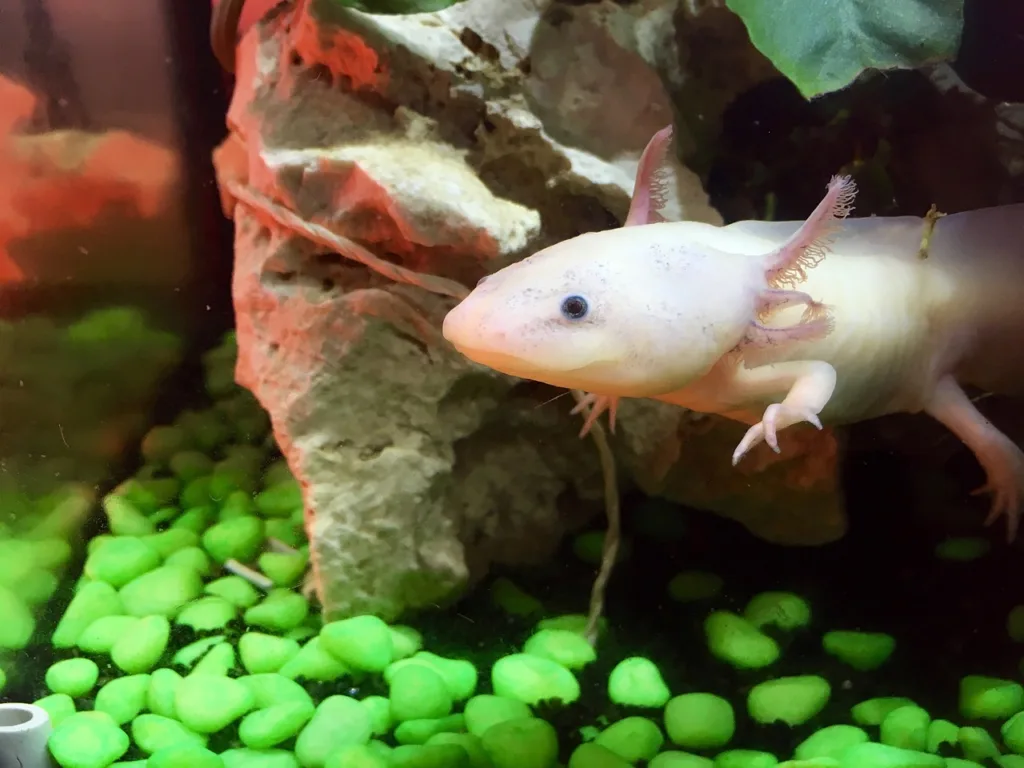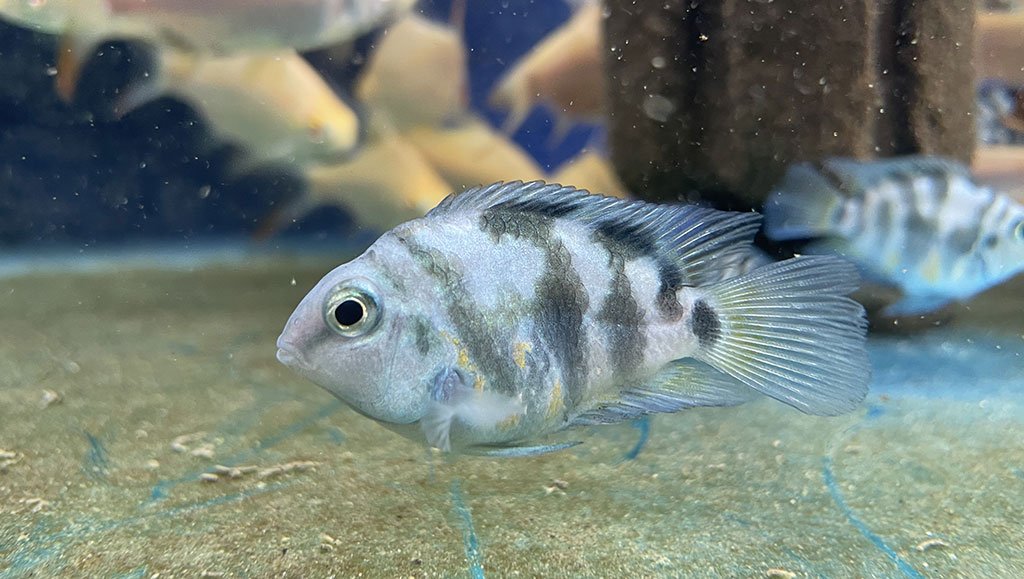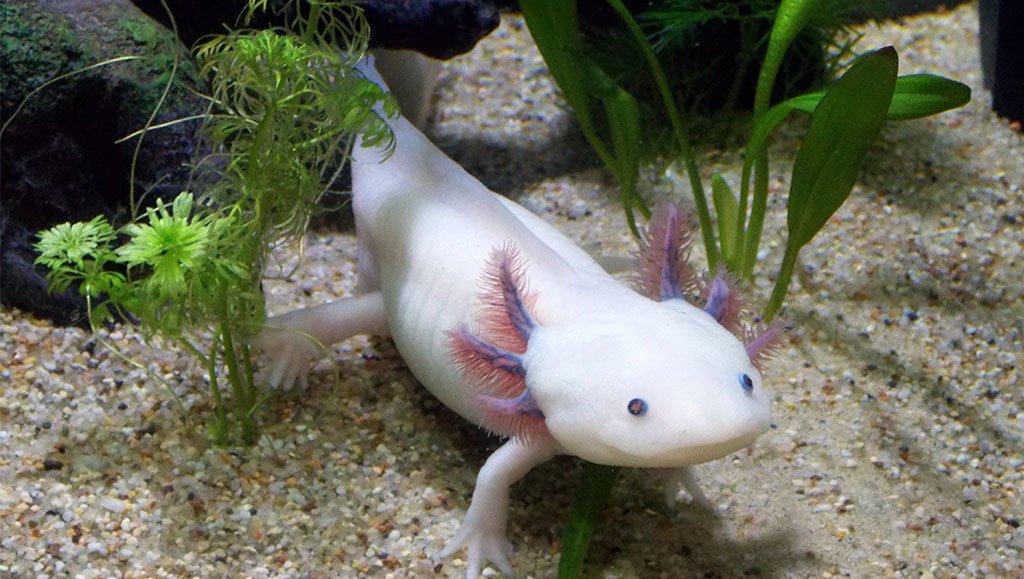Hi there, fellow axolotl lovers! Have you ever wondered how these cute water creatures can stay for even a single day without eating? I have! Sometimes life gets in the way and we may worry that we are not feeding our little buddies enough.
Through my own experiences combined with a little research, I have come up with some interesting revelations about the feeding habits of axolotls that I cannot wait to share with you. You will not believe just how important it is to understand their dietary needs whether you are a seasoned keeper of these amazing creatures or just starting out. Let’s dive together and get to know more about these fascinating aquatic animals who make us smile during meal times!
Main Lessons:
- Set up Regular Feeding Times: It is essential to keep our amphibians on a consistent diet.
- Invest in Additional Food Sources: Floating pellets as well as live foods give hope when someone is away for short periods of time.
- Adopt Technological Innovations in Feeding: In case one is absent when it is time to feed, automatic feeders offer practical solutions.
- Observe Health and Behavior: Always assign someone to monitor your axolotls for signs of stress or illness at their earliest stages.
- Slowly Change Diet and Schedule After Short Absences: One way one can avoid causing digestive upset is through reintroducing his/her axolotl gradually back into regular feeding routine.
- Consult With A Veterinarian: Professional advice becomes invaluable after long periods of altered feeding behavior like this one. Besides, veterinarians consultation who knows what problems may arise if not being treated properly
- Encourage Natural Foraging Instincts: You can bring an epicurean appetite back upon your water puppy by setting up hunting scenarios similar to natural ones
- Learn Other Ways To Feed Them: While baby salamanders ask for more meals within 24 hours, adults can take even a longer time without food but they must be fed on regular basis.
- Observe and Adjust: Always bear in mind that every axolotl is different; therefore, you should pay attention to their requirements and change your habits accordingly.
- Make Plans Ahead: You will have everything it takes to ensure the healthiness of your pets as long as you plan for it even if you will not be there all the time.
Understanding Axolotl Feeding Behavior
Oh, what a creature! The funny activities of these creatures cannot stop surprising me with their diets. Now I went further to find out more how these animals feed themselves both in the wild and at home. This knowledge will help us become better parents to our caudate amphibians.
Feeding habits in nature
Wild cousins are first on our agenda. In Mexico’s various lakes which form their natural habitat, axolotls are nocturnal eaters. They literally invade upon prey (small fish, worms and other aquatic invertebrates) under the cover of darkness. Your axolotl might show greater interest in eating during evening times due to this natural behavior. It is amazing how such instincts come alive even when they are imprisoned within tanks!
Factors influencing appetite and feeding frequency

So from my own viewpoint there are various things that might affect how often or how much our pet axolotls feel like eating. These may range from water temperature (colder water slows down metabolism rates) to stress (e.g., environmental changes or living together with hostile tank mates). Even seasonal variations may affect their appetite levels. We just need to observe them keenly so as what’s normal about an individual animal? They surely keep us busy!
Proper nutrition for axolotls is essential
Nutrition is a subject that cannot be spoken much about. Besides ensuring a healthy, happy axolotl, balanced diet also ensures strong immunity. Through trying to give my axolotl the best, I have discovered that alternating between high-quality pellets, live worms and an occasional treat of bloodworms has helped them survive rather than just thrive.
Health Monitoring through Feeding
Interestingly, feeding times can also be used to assess the health of your axolotl. Is it eating less? Have they become pickier? These might be early signs or stress or illness. Take it from me; watchful eyes during meals have helped me stop potential ailments in their tracks many times.
The Pleasure of Feeding Time
Lastly, on a more personal note, feeding time has become one of the highlights of my day. It is so satisfying to watch your axolotl hunt for food and gulp it down whole. In this moment you are there with them – their unique personalities come shining through.
Determinants of Food Duration for Axolotls
Okay guys! Now that we know the basics about how often you should feed your axolotl it’s time to go deeper into what could influence this duration for these lovely creatures not getting any food at all. It depends on various things and in my opinion paying attention to these may make a whole difference in the world:
Axolotl Age and Developmental Stage
Just like us, metabolism rate increases as they get younger. Their juveniles grow very fast hence need frequent feeds compared to adults’. I realized my babies need to eat at least once some even twice per day while my grown ones are cool with every other day feeding only .It’s all about being flexible as they grow big enough.
Tank Conditions and Water Quality
You won’t believe it but the habitat created for your axolotls contributes significantly towards how frequently they need to eat. Clean water, with the correct temperature and pH values can help regulate their metabolism. My axolotls have always shown consistent feeding behavior which I attribute to a well-maintained tank because it gives me a sign that they are happy and healthy.
Health and Activity Level of the Axolotl
An active axolotl will always be hungry. As such, energy expenditure largely determines their dietary requirements. Moreover, a healthy axolotl is predictable in what it consumes compared to an unhealthy one. When one of my axolotls went through a sluggish phase, its appetite decreased. By observing how active the animal is and its condition of health you are able to see how much you should change feeding regime.
Seasonal Changes and Ambient Temperature
For instance, even when kept indoors, an axolotl’s eating habit may be affected by some seasons. During winter months slightly less frequent feeding was noticed in my case .This is consistent with the natural decrease in metabolic rate due to low ambient temperatures around the tank. It is really interesting how much they catch onto it all.
Type of Food Offered
The variety as well as kinds of food could also determine period during which an axolotl can go without eating. Hence why high quality nutrient dense foods last for longer than fillers or lower nutrient options. In my experience, alternating between different types of food such as pellets versus live worms makes them stay full for longer periods making me enjoy our feeding time even more so .
How Long Can Axolotls Go Without Food?

Hiya, fellow axolotl buffs! Today, I feel excited to talk about a question that comes across the mind of every axolotl owner at some point: “how long can axolotls go without food?” Through my own experience and a little bit of research, I have collected some very valuable insights that I am eager to share with you.
General Guidelines for Food Duration
Adult axolotls can amazingly stay healthy even when they don’t eat for up to 2 weeks as observed by me during certain conditions. Although this is not something I’d make into a custom! Younger axolotls grow so fast and must be fed more frequently than older ones (maybe for no longer than two days).
Factors Determining Food Absence Tolerance
Several factors determine how well an axolotl can withstand hunger periods. How old they are, their health status, and water quality in the aquarium are the primary determinants. Healthy grown individuals kept in optimal aquariums last longer without food. However, when ill or stressed, this period may decrease significantly.
Signs of Hunger or Stress in Axolotls
Knowing what signs of hunger or stress to look out for early on is a life saver! If your axolotl is looking for its prey it may become even more active than usual if not disturbed by anything else. Signs of stress might include disinterest in food changes in colorations or trying to escape from the tank itself. These behaviours should be watched closely because they provide important clues about how your pet is faring.
Adjusting Feeding Schedules During Absences
What do you do if you need to leave? This is where some planning comes into play. For short trips away from home it’s often enough just to give your axy a good meal before leaving them alone. For longer absences, finding a reliable friend who knows your pets feeding routine can save you. I’ve had occasions where I have left my sitters detailed instructions and it has been amazing.
When to Consult a Professional
If ever in doubt about your axolotl’s eating habits or health, don’t be hesitant to reach out for professional help. In my case, having a knowledgeable vet or experienced breeder on hand has made all the difference in keeping my axies healthy.
Effects of Extended Food Absence on Axolotls

Hello once again dear axolotl family! Today we are going to delve into one very important aspect of axolotl care – understanding the effects of prolonged food deprivation. Based on what I have gone through in life and learned along, i wish to bring out how not eating for long periods may affect our tiny companions.
Physiological Changes in Axolotls
Based on what I observed, there are several physiological changes that an axolotl goes through during an extended period without food. Such changes may include decreased energy levels and slimming down considerably like becoming slimmer. It just shows us things about their bodies adapting under environmental circumstances.
Impact on Growth and Development
Regular feeds are critical for the younger, fast-growing axolotls. Going without meals for too long can hinder their growth and development. I had one juvenile that didn’t eat well because there was a period of food shortage. It was an eye-opener to see the difference in growth rate compared to its siblings who were eating as usual.
Risks of Malnutrition and Health Issues
The absence of food over a prolonged period could cause malnutrition thus making our axolotl friends more prone to health challenges. Their immune systems become weak due to malnutrition and this exposes them to more infections and diseases. I learned how important it is to have balanced diet so as to avoid these risks.
Behavioral Changes
One area where I have picked something up on is that axolotls have behavioral changes when they go without food for a long time. They may either become passive or more hostile in their quest for nourishment. By observing these actions, one gets an idea about their health status and whether some adjustments might be necessary in taking care of them.
Long-Term Health Implications
There should be no underestimation of what happens when a person’s axolotl goes without food for long periods. This might include stunted growth; decreased resistance towards developing diseases; reduced lifespan among others (Petersen 2017). In my experience, being ahead on nutrition has been very helpful in averting such events.
Feeding Strategies for Axolotls During Food Absence
Greetings axolotl parents! Caring for your axolotls through the highs and lows of life especially when it comes feeding them has been one exciting journey isn’t it? Today, I am here share with you some strategies that helped me during times when regular feedings were not possible. You may be going on vacation or experiencing a temporary food shortage, these tips can help save your life!
Planning Ahead for Temporary Absences
The secret my friends lies in the preparation. Realizing that I will be away, in the days before my absence, I increase feedings a bit. This does not mean giving them more food at once; rather, it means some additional amount or another feeding session each day. That way, they are sure to have enough energy stored until normal feeds resume again.
Providing Alternative Food Sources
Thinking outside the box has been a game-changer for me. For shorter absences, I’ve had success with leaving sinking pellets that slowly release food over time. Trying to create a more natural environment in their tanks by adding live food sources that can survive for some time like small shrimp has also helped (Petersen 2017). At times when you are busy and cannot always keep your pet’s normal eating habits uninterrupted, these options give your axolotls something to hunt and snack on during this period.
Monitoring Axolotl Health and Behavior
Even if I’m not there physically, someone must check on my axolotl buddies. This is not just about ensuring they have eaten enough; it is also about observing their behavior and healthiness. If any signs of stress or major weight loss are observed by an additional watcher, immediate attention can be provided.
Automating Feeding with Technology
Recently, I started exploring the use of automatic feeders-what a revelation! What this does is that it allows regular measured amounts of pellets to be given through an automatic feeder for your axolotl. The only issue with this techy solution is that it takes some trial and error so as to get the parts right in terms of quantity and timing but once done it becomes reliable especially when one cannot manage to do so themselves at all times.”
Balancing Diet When Returning
I gently reintroduce them into their feeding routine. This is very important in case they have been on a different diet or the number of times they are fed has changed, I believe it is essential that their normal food be slowly introduced again to avoid shocking their system. This results in a smooth return to normalcy and supports their general health.
Ways of Re-Commencing Feeds after Absence

Hey axolotl lovers! Reverting back to a usual schedule after being away can be as much of a change for us as it is for our axolotl friends and especially when it comes to feeding them. Below are some tips I’ve come up with from my own experiences that may make this procedure easier for you and your aquatic buddies.
Gradual Resumption of Food
Start small. On my return, I begin with smaller rations of their regular food and work up over few days until they reach the normal meal size. This method helps ease their digestion hence causing no unnecessary stress.
Checking Axolotl Hunger Levels and Changing Feed Time Frame
Keep an eye on how your axolotls behave during feedings. Sometimes, after not eating for some time they may not be eager to eat which is fine. Based on their appetite, I may temporarily alter their feeding timetable so that they do not starve or become bloated by too much.
Consulting Veterinarians for Help
When in doubt, I ask professionals. Consulting with a veterinarian who understands axolotls will equip you with personalized advice concerning your axolotl’s health and dietary needs especially after long periods without food. This has proved very helpful during transitions for me.
Monitoring Health Changes
When the regular feedings begin again, watch out for any changes in health or behavior. In case anything seems unusual then there might be something deeper than meets the eye which requires attention. Watching for these changes enables me to ensure that a return to routine living does not cause any health damage.
Promotion of Natural Foraging Behavior
To renew their interest in feeding sometimes I introduce live foods by imitating natural hunting scenarios. This triggers their hunting instincts and makes them more involved in feeding, which results to a better overall process of returning to normal feeding.
My Thoughts on How Long Axolotls Can Go without Food
After several years of looking after these intriguing animals, I have discovered through researches and personal experiences just how long can axolotls avoid food. According to my observations, young axolotls need to be fed more often, daily if possible due to the fact that their bodies are growing and they have high metabolism rates. On the other hand, adult axolotls can be quite resilient as they can go without being fed for about a week or even two depending on their health and environment conditions.
I wouldn’t recommend doing it often though, as it is necessary for their health and happiness to be fed on a regular basis. But sometimes life happens and there are things that go beyond our control. What has always worked for me is ensuring that my axolotls have been properly fed and in good health before I anticipate being away; this way, at least there’s some leeway when one can’t afford to feed them regularly. However, each axolotl is different from the other and what may work for one may not work for another. That’s why keeping an eye on their behavior and health is crucial even under unfavorable circumstances. In this regard, all I would like to say is always plan ahead
watch your axolotls closely and consult a vet who has experience with these species if you’re unsure of what to do or how to take care of them.




